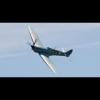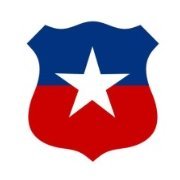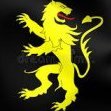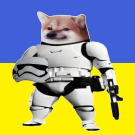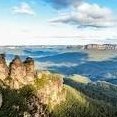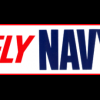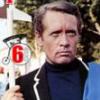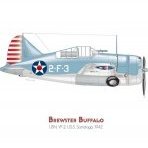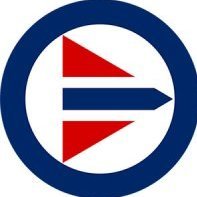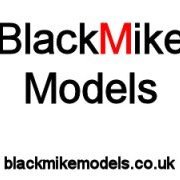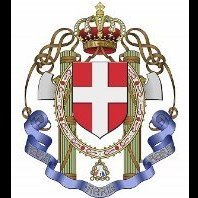Search the Community
Showing results for tags 'hasegawa'.
-
This is a placeholder for my build which will be a boxing of the Hasegawa Spitfire Mk.I in 1/72 (originally released in 1975 according to Scalemates).
- 18 replies
-
- 2
-

-

Grumman A-6E Intruder***FINISHED***
PeterB posted a topic in Big In Japan - Classic Japanese Kits GB
I suppose it is possible I might find something else in my stash but I know I do not have any Japanese "subjects" ie planes/tanks/ships and as far as I know I only have two Japanese manufactured kits left, one of which is in tended for another GB, so that just leaves this- It cost the princely sum of £3.99 from a discount store on the outskirts of Leeds back in the 1990's and I bought it to replace my original A-6A kit bought in Ellesmere Port in the late 1970's which is in a pretty sorry state though I may be able to renovate it at some time. I gather that they did upgrade the original kit a little, particularly the arrestor hook which was wrong, but I suspect the only other changes were to add the sensor turret under the nose for the A-6E version. The cockpit still has terrible seats which are moulded as part of the rear bulkhead, and not staggered as in the real thing, so I will be doing some work on that and perhaps the u/c bays, but other than that and probably a modified weapon load-out it will be OOB. The kit comes with two optional colour schemes - gray/white and two grays and I will probably be doing the latter. Given the number of GB I hope to be involved in the next few months, this may be a slow build! Pete -
This is the Hasegawa/Minicraft 1/72 P2V-7 Neptune boxing from 1972 or 1973. I bought this second hand along with the Eduard PE and Mask set for it. Other than adding the PE, this will be an OOB build of the generic post WWII U. S. version in Navy Blue. I am hoping this to be an easy build as I need one after a couple of trying ones. Here is the box art and collection of sprues loose in the box It appears the fuselage halves have been taken off of the sprues and for some reason the locating pins have been sanded flush. I wonder if original owner didn’t realize what they were and thought they were sanding off sprue attachments? So, the prior owner has turned this into a short run kit without locating tabs, wonderful. So work begins with the cockpit. The kit is very basic with 2 seats, a floor and 2 bulkheads. There are also the pilot figures to help jazz it up, but I am totally rubbish at figure painting. So, I am hoping the Eduard PE set will help jazz this area up. I am not sure how much can be seen once the canopies are on, but looks to be very barren inside. First step is to locate the minimal floor console instrument panel and sand the detail down so the Eduard PE part can be attached. Next looking at the seats, there are some quite lovely and large injection marks that need to be dealt with. Next up the base coat of grey for the interior parts including the nose gear bay housing. I tried to come close to the colour on the PE and think it will blend in nice once a weather finish has been applied. A little bit of dirtying up and scuffing . . . Now to work on the PE stuff. There is a little box that sets at the rear of the seats on the rear bulkhead that has to be painted and bent into place. That fuzzy thing above it is the tip of a microbrush to give a sense of scale of this huge item. Why at my advanced age am I doing PE work on a 1/72 plane? I need magnifiers for my magnifier. Onto constructing the two control columns out of the PE. It consists of two pieces, the control column that has to be folded and the circular yoke. I have completed one and you can tell the size by the tweezer tip in the picture. Next up are the rudder pedals. Here is the PE part after painting, but prior to being folded. And here it is all folded up; only 3 more to go, yippee!! And all four looking somewhat uniform Now this is what the kit cockpit would look like if built straight out of the box. (Please ignore the center control PE part and imagine a really crappy, raised, blobby, plastic detail area.) No wonder there were figures to put in here. Otherwise, there would be nothing to see. I put the PE control panel in the starboard fuselage half and it fit quite nicely and jazzes the area up a bit. Now here is where I ran into problems. There are two PE side instrument columns that run between the fuselage wall and the cockpit seats. When I dry fit them, there is not enough room between the seats and the fuselage wall for them to fit. My choices are to cut down the instrument panel and lose some of its detail, or sand down the chunky seats to allow more room for the side control column. I decided on the latter. Did I dry fit prior to installing the seats and begin work on the seat belt placement; of course not. I didn’t get the prudent idea of checking the fit until the seats were firmly in place. So, I pried off the port seat and sanded both sides of it down, trying to not mess up the seat belts. I then placed the seat back and you can compare the size of the sanded seat to the original kit seat. The seat appearance is improved I think. The side console will now fit. I just have to pry up the other side and do that seat too. But, it is time to go to work to pay for my plastic addiction, so I must stop. All comments always welcome.
-
Hi Folks, Just finished this lovely Hasegawa kit. OOB except for the photo etched parts (mostly the wires) sold separately by the same company and the figures that came from the spare parts box (Tamiya I believe). Excellent fit, good details and handy decals. First time using the black basing technique and pretty satisfied with the results. I used mostly AK Real Colors for the model. All the best, Cris.
- 10 replies
-
- 46
-

-
Hi all This has been on my workbench awaiting completion since about November last year - lots of other stuff getting in the way. This is Hasegawa's excellent 1/48 G-6 kit, finished as the mount of Uffz Rolf Burkhardt of 9./JG 301, based at Zerbst during Spring 1944. The colours and markings are from a Claes Sundin profile, (I couldn't find an original pic). Hope you like
-
I have just finished these for the Fw 190 GB, all in 1/72. A-5, F-2 from Eduard and A-7,8 from Hasegawa. Aftermarked decals used on all. Cheers Jes
-
My main entry for this event is something I've wanted to build for a while, the PBJ-1H. The North American B-25 is one of my favorite aircraft, a medium bomber that became incredibly versatile. Used in the Pacific, these US Marine operated bombers were used in low level attacks and anti-shipping. VMB-613 started operating 15 PBJ-1H in early 1944. I'll be using Hasegawa's 1/72 kit. I picked up the kit for a good price, but the decals are missing. I'll have to source some, but in the meantime, I've picked up some accessories as well.
- 27 replies
-
- 19
-

-
Hello all, Joining for my second GB: again a very interesting theme to participate in! My plan is to build an A-1J Skyraider, from VA-145 “Swordsmen”, aboard USS Intreprid in the Gulf of Tonkin, ca. 1967. During the Vietnam war, US Navy aircraft carriers operated in open waters from a location known as “Yankee Station” in the Gulf of Tonkin, off the coast of Vietnam. Carriers at Yankee Station were referred to as being “on the line” (i.e. in combat), while conducting air operations: initially strikes over North Vietnam, but also CAS and Rescue Combat Air Patrol (RCAP) missions. U.S. Department of Defense, Public domain, via Wikimedia Commons - Public domain The above map shows the designated targets for operation “Pierce Arrow”, ordered in August 1964 in response to the Gulf of Tonkin incident, with Vietnam torpedo boat bases and an oil storage depot being targeted. Among the first wave of the strike sorties were A-1 Skyraiders from VA-145 Swordsmen at Yankee Station. The unit was already present in the region, flying RCAP missions in South Vietnam and Laos. VA-145 remained operational throughout the conflict, switching to the A-6 Intruder from 1968. The below picture shows two of the unit's Skyraider: an A-1H (back) and an A-1J (front), aboard the USS Ranger in 1966 in the area. U.S. Navy, Public domain, via Wikimedia Commons - Public domain I will be using the Hasegawa 1/72 kit, with a few small modifications. Decals for VA-145 are already in house (Printscale & Microscale), just waiting for some aftermarket stuff to arrive, then I will post some more pics. Thanks for looking! Patrick
-
I have a "Delta Combo" boxing of the old Hasegawa F-102A and F-106 and built the F-102A for last year's Century Fighters GB. So next up is the F-106: Not many parts, but very crisply moulded. I will probably do the bicentennial scheme. The tooling dates from 1969. It needs a little bit more detail in the cockpit and wells, but otherwise it's good to go! FWIW, here's the Deuce from the combo: Regards, Adrian
- 63 replies
-
- 18
-

-
Perfect timing for the STGB with Hasegawa doing the recent re-pop of their lovely 1/48 F-8E Crusader kit. I pre-ordered to ensure I snared one (wish I bought two). And the usual box of plastic. A lot of really nice decal options in the box. However, I had Furball's wonderful decal sheet MiG Masters 48-007 with markings for 26 aircraft. Printed by Cartograf. Who could resist? This gave me the problem of what scheme to choose. Adding the kit's 4 options gave me 30 aircraft and 1 kit. So many to choose from. I decided to go thematic rather than pretty and focus on the "Last of the Gunfighter's" only two gun kills achieved out of the total 18 (now sometimes increased to 19) kills credited during the Vietnam War . The last gun kill was an F-8C flown by LCDR Robert Kirkwood. I did not feel like back dating the E to a C so an E it must be. This leaves only one option, the first credited gun kill, LT Eugene Chancy VF-211 USS Hancock June 21, 1966. Just to make life interesting, I plan to throw a fair bit of resin at it. Whether I use it all will depend on how we go. Plus some Reskit wheels if this aircraft had the later hubs. The two aftermarket kits that would add to this build would be Wolfpack's Air Brake and Wing Folding kits. As rare as the original Hasegawa kit. Yes, can be tracked down, but expensive. I'll probably scratch-build these additions. The air brake is a must. Always seems to be cracked open when the aircraft is at rest. Now, looking forward to the starting gun. Ray
- 77 replies
-
- 11
-

-
It's been a bit of a struggle deciding which of the numerous carriers I have in the stash to build for this GB, but the 1:350 Hasegawa IJN Junyo has been extracted. On opening the box, I found all the Hasegawa add on packs that I'd forgotten about. Will probably need the full time of the GB to build, but in for a penny and all that. Will take pics later.
-
I nearly forgot it's Blitzbuild weekend! I've got a 1/72 Hasegawa Ki-61 from 1973 that was going to go in the "Big in Japan" GB but I'll give it a go here. It seems like a simple straightforward kit, with nice details and delicate recessed panel lines. I'm not starting yet, but here's a pic to get going: (The PE was in the box when I bought it second hand - not sure if I will use much/any) Regards, Adrian
-
I inherited this model from the late Tom Weinel, former F8U Crusader pilot, model builder and Naval Aviation curmudgeon. It arrived in a largely-constructed state, but i needed to take a few steps backwards in order to fix some elemental construction issues in order to get some assemblies to play well with each other- mainly the upper fuselage seam and the leading edges of the wing. Either due to kit design or operator error, the wing did not "sit" in proper alignment with the fuselage saddle when i test fit it. As usual, i wrote an extensive "Deep Dive" (some may call it an incoherent, rambling diatribe) on building this huge Douglas monster. It is available here: Let me get the executive summary out of the way. Subject: Douglas A3D-1 Skywarrior, BuAer No. 135431 from VAH-123. NAS Whidbey Island, WA, 1962. Kit: Hasegawa A3B Skywarrior, Kit No. 04041 Scale: 1/72 (You'll need to pay me to build a bigger one) Additional Parts Used: Resin Nose Radome and 20MM tail Gun installation from Hasegawa A3D-2 Skywarrior "Early Version", kit No. 00029; resin main wheels from Reskit, part no. RS72-0170. Paints Used: Tamiya Acrylics mixed to FS595 specs per guidance found over at www.replikator.club; Tamiya LP-series metallic lacquers and Mr Color Lacquers for the undersides and the faded orange. Decals: National Insignia from Fundekals sheet FD 72-011; BuAer Numbers and Modex codes robbed from Microscale sheet 72-26 and Zotz RA-5 Vigilante decal sheet; Itty Bitty BuAer numbers kluged together from a couple of Eagle Strike/AeroMaster F-4 decal sheets. Modifications/Additions: "Blunt" nose and tail cut from fuselage and replaced with earlier version nose and tail from the Hasegawa "Early Version" kit. The Quickboost conversion parts i think are identical, and should work as well. Intake Bullets had the oil cooler inlets drilled out and plugged with tubing of smaller inside diameter; Bullets were subsequently filed, sanded, and re-profiled to make them more pointed. Intakes were cut from front of nacelle and seams were filled on inside; subsequently primed, masked and painted the insides before re-attaching to the nacelle. Aerodynamic fairings removed from inboard sides of engine pylons and corresponding gaps and cavities filled. Inboard wing slat panel lines eradicated. This was required in order to backdate the aircraft to A3D-1 standard. Locating pins on the nacelles removed and replaced with longer, more substantial pins made from Copper rod. Nacelles were painted and weathered prior to mounting on the wings, towards the very end of the painting stage. Anti-collision beacons removed. Fuselage Fuel Vent Mast replaced with smaller, earlier version, mounted on underside of left tailplane. Void between top of nosewheel tyre and inner side of nosewheel fork opened out and cleaned up Multiple layers of filler, added to rear of canopy at the base to improve the profile and integrate it better with surrounding fuselage sheet metal. Weathering: Panel lines highlighted with mix of Model Master Grey enamels; Oil, Lubricant, and Hydraulic leaks depicted with Windsor & Newton Payne's Grey artists oils; Hand prints and foot traffic depicted with Tamiya Weathering Master, Set B "Soot". Shadowing on landing gear, flap tracks, gear doors etc. done with a wash of water, Future, and Tamiya Flat Black. This model came to me with the interior already assembled and painted, so with the exception of a wash i added, some seam filling and the addition of masking tape belts, there is nothing else added. Late in construction i discovered the model did not have sufficient nose weight, so i fixed this by mixing copper BB shot with 5 minute epoxy and i poured it in through the opening for the lower entrance hatch/bailout chute (having masked off the surrounding surfaces first, to prevent epoxy drips from ruining the finish). The model was a test case for closing up 90-degree gaps by using a combination of black woodworking CA, and bare metal foil. The result was a joint that was not eliminated, per se but mitigated to a degree where it was appropriate for scale. This allowed me to delay engine installation until after the model had been painted. Since the model came to me with the wings assembled, it was not practical to cut out, and depict the aerodynamically actuated Douglas slats (something of an Ed Heinemann design trademark). While it would make the model more accurate, it would definitely complicate the assembly task in the construction end game. BuAer 135431 was the 39th Skywarrior built, and was part of the second batch of A3D-1s. Originally delivered in overall gloss sea blue, it was assigned to NATC at Pax River and served as a service test aircraft. I'm not sure if it ever went to sea with an operational squadron, but it was re-painted in the Light Gull Grey over Gloss White paint scheme and assigned to VAH-123; the west coast A3D Fleet Replacement Group. Many of the aircraft in the squadron wore high visibility Fluorescent Orange markings as a preventative measure against midair collisions. The dayglo did not stand up to the elements very well, losing its fluorescence first, then fading to a pumpkin orange colour before the dayglo wore away exposing the white primer underneath. I based this model off a profile photo found in the Aerofax book on the A3D, written by the late Rene Francillon. Other photos taken of different aircraft from the same squadron helped to "Fill in" the knowledge gaps, so the markings represent something of an only partly informed, educated guess. Omission of the twin 20MM cannon in the tail was not an oversight; Early on in the service testing and evaluation, the gun system showed poor reliability and it's effectiveness as a defensive measure was uncertain at best. This was my first test using the Tamiya LP- series of metallic lacquers and For the most part they worked well. I used a 50-50 mix of LP-11 Silver and LP-61 Metallic Gray for the stainless steel "hot sections" on the aft engine nacelles. Masking the canopy framing was difficult and only made bearable by using the KV Models vinyl A3D canopy masks. They are accurately cut but they are somewhat thick and occasionally they had difficulty adhering to some of the tighter radii on the upper canopy. Eduard masks would have been my first choice, since the washi-paper material is thinner and it sticks well enough to the clear part, but not too well. The thickness and tenacity of the KV masks combined with the multiple coats of filler, primer, paint, and clear coats resulted in chipping when the masks were removed the first time. This required substantial re-work. Speaking of the canopy, it's thin and clear, but the attachment to the fuselage is problematical because it sits on a curved "saddle", as it were. Also, built from the box, the canopy profile has an exaggerated bubble shape when simply placed onto the model. The A3D canopy was actually integrated fully into the surrounding sheet metal structure and it was not installed as an afterthought. I applied multiple layers (3, i think) of Mr Surfacer 500 to the back of the canopy to build up the profile and blend it in more seamlessly with the upper fuselage. However, i think it was definitely worth the effort. I would like to take more photographs of the finished model, but right now i need to take a breather and ponder my next project. I have another Buccaneer close to the finish line, a Boeing 720B in progress and of course there's still more decals to put on the Phantom. As the largest and heaviest aircraft to serve aboard a carrier, the A3D makes an impressive centre piece in a Carrier-Based Naval Aviation collection. While it seems somewhat simplified compared to contemporary offerings from Academy, Airfix, and Clear Prop etc. It's a good starting point for just about any A3D Skywarrior one would choose to build. Fly Navy!
- 22 replies
-
- 67
-

-

-
Hello guys, Second build for this year, the Hasegawa 1/48 F-104G in the markings of the Belgian AF 349 Sq. Paints are Gunze and AK real colors acryls, while decals are from an Eduard reboxing of the Hasegawa kits. This build is a gift for a fellow belgian modeller. Post split as there's qui te a lot images Hope you'll like her.
- 18 replies
-
- 37
-

-
Good day, Here is my third completed project for the year. This is the tanker version of the A-3 Skywarrior family. These are the highlights of the kit……….. 1. Paint used : A. Airframe : Mission Models Hi-Lo Vis Grey ( MMP-117 ), Tamiya Flat White ( XF-2 ) 1). Washes : Ammo Medium Grey ( airframe ), Vallejo Dark Brown, Black, Light Rust 2). Cockpit : Life Color Dark Gull Grey ( UA 033 ), Gunze Olive Drab, Tamiya Dark Green ( XF-81 ) 3). Wheels : Tamiya Gun Metal ( X-10 ), Tamiya Flat White 4). Tires : MRP Flat Black ( base color ), MRP Tire Black ( highlights ) 2. Aeromaster Decals KA-3D Skywarriors #72-161 3. Uschi Bobbin Thread for antenna wire 4. Engine pods : AK Interactive Extreme Jet Exhaust ( base color ), Metallic Purple, Metallic Blue The kit was straightforward without many issues. The surface detail is excellent and the fit is very good. The landing gear and gear bays are complete with superb detail. I enjoyed this kit and I recommend it to all skill levels. Thank you in advance, Mike
-
Here's my placeholder for Hasegawa's 1/32 FW190D-9... here's the kit: ... and the plasticky goodness therein: ... and the instructions: The kit contains a pilot figure who I may or may not use depending on how well done he is - I can't really see the parts for him in amongst the bagged sprues. If not, I have these: I also have the New Ware canopy mask set - inside and outside masks : The kit transfers look remarkably good for Hasegawa - I don't fancy the JV44 markings with the striped undersides (no offence @Retired Bob ) and the kit has two options for them, but there is another option provided: ... which I may use as it's a nice plain-looking one, but failing that I also have these: So I think I'm set. I've seen some different aftermarket gun-covers are available but I'm blissfully ignorant of the differences so I'll just hope the kit-supplied one is correct for whichever option I do go for See you when it all kicks off Cheers, Stew
- 147 replies
-
- 16
-

-
G'day all, Finally finished this one after lots of stops and starts, primarily due to moving interstate and a lack of room in our new place - can't wait to get back to our own house when this year's over! You can see my 'Harry Potter cupboard' under the stairs I'm working in at the moment in a few of the shots. What can I say? It's the Hasegawa kit, with a heap of extras added - most of which I shouldn't have added! All the dramas are detailed in the WIP build link below. It represents A89-281, which is now at HARS and, unlike her sisters, A89-273 and the ex-Aeronavale 566, is very unlikely ever to fly again. She's depicted as she was just before her removal from service in 1978. Finished with Mr Surfacer White, Humbrol 40 Grey and 85 Satin Black and a mixture of detail colours from Colourcoats and Testors Model Master (all enamels). Weathering pastels (barely visible) to depict exhaust staining and Mr Colour weathering solution (brown) in the wheel wells. All coated with Future with Tamiya X-21 added to flatten the finish, where required. WIP and extras detailed at: I'm glad it's done and off my bench but it's not reflective of my current skills and will sit in the cabinet as a reminder not to go crazy on aftermarket and detailing and not to use 30 year old decals!! And one with the aircraft it replaced in-service - the GAF-built Lincoln B.30: Sorry about the stuff in the background but I'm a bit too over the model to care, to be honest! Hopefully the 1/48 Harvard will be better...
- 25 replies
-
- 66
-

-

-
Ki-61-Id Hien (Tony) | 1/72 | Hasegawa 19th Air Group, Luzon, Philippines, 1945 This was one of the oldest kits in my stash. In my first or second year of college, my parents gave me almost all of the 1/72 Hasegawa Japenese fighter kits for Christmas. I built all but this and the Tojo. About a month ago, I decided I wanted to get started on it soon and posted a question here because the color callouts confused me. Luckily I did, because that's how I found out that the infamous "Shamrock" on the Hasegawa kit is open to considerable debate and likely didn't exist. I really wanted to do a camouflage version of the Tony and luckily, the Tamiya Ki-61-Id kit in my stash had a set of decals for one. My current A-36 build was getting bogged down with research that was sapping the mojo ,so I pulled this out to do something while I was researching and planning how to proceed. It was a fast build, being a simple kit, but it too was overcome by events and wasn't worked on for a few days. The Tamiya kit called out their "NATO green" as the top color and color swatches I found on line ranged from an almost gray to a nearly lime green. That was frustrating. The research I did, though, showed that late in the war Tonys were painted a green that weathered to a close match to the US olive drab, which is what I used. As with my other OD builds recently I "pre-toned" the paint using mottle stencils to put random patches of Mr. Color C319 (Lt. Green), C141 (Propeller Brown), C121 (RLM Brown Violet). I also used patches of C21 Middlestone pre-shading to create sun fading effects. I like this technique because it creates very subtle shifts in the tone of the olive drab that looks realistically worn and weathered. I also penciled in the panel lines, but the technique works much better if there are no panel lines and you create them with the pencil. With scribed panel lines, you are stuck with the width of the line as it was molded. The Hasegawa panel lines are very inconsistent, deep in some places and almost non-existent especially toward the edges. This was the first time I've used Tamiya decals. They are thick like Hasegawa decals, which doesn't bother me. They acted like they weren't going to conform to the details no matter what solvent I used, but they worked out just fine after I let them sit overnight. Also, the Tamiya decals had an extra set of everything, including stencils, because the Green and bare metal versions had different colors for stencils and the Hinamaru on the sides is integrated into the stripe for the metal version. Unfortunately, there were no spare hinamaru for the top and bottoms of the wings (and the Hasegawa decals were too bright), so I painted the hinamaru on. This is the first time I've attempted that and I think they look great. I just about matched the color of the hinamaru decals on the sides too! In retrospect, I think I should've put more wear and weathering on it. Reference photos I had were not detailed enough to show how much wear and weathering Tonys had, but late in the war there was probably more than I show here. Finishing: Scratch built cockpit, seams filled with CA. Paint: Mr Color C12 Olive Drab top / Alclad White aluminum with some Panels Alclad Aluminum on bottom. Decals: Tamiya Ki-61-Id decals The Tamiya decals worked fine, except for one that gripped and couldn't be moved at all, no matter what. So, the outlines of the ammo access doors on the starboard wing are crooked 🙁. Also, since the decals were for another kit, I found that the outlines for the ammo access doors didn't quite line up with the molded lines in the model. I've said in the past that I am a fan of Alclad, however, I think I am a fan of only their colored metals (Steel, burnt metal, etc.) and their "super shiny" metals (chrome, polished aluminum, etc.). I used white aluminum and aluminum on the bottom, and while the white aluminum came out very nice, the aluminum was quite a mess. It came out glossy, which is a different look than the sheen from metal. Spraying some Testors metallizer sealer on the aluminum made it look better, though. As with other Hasegawa models of this vintage, the cockpit was a chair, and I.P. and a floor. Not even a stick! I spent an evening scratch-building an interior using the Tamiya kit as a template. I can even see it through the canopy! The Gunsight was a spare from a Spitfire kit and the seatbelts are tape. Hope you like it! Questions, comments and constructive criticism always welcome.
- 32 replies
-
- 36
-

-
Hi all, I've a soft-spot for Naval Aviation and know @Grey Beema wouldn't let me hear the end of it if I didn't build something. So I'm in with this one which only had a service life of four years. Hasegawa F11-F1_Tiger_Box by Dermot Moriarty, on Flickr The second US Navy aircraft to go supersonic after the Douglas F4D Skyray, the F-11F-1 Tiger was soon replaced by the F-8 Crusader. I like how this is a little different and looking forward to giving it a go. Plan is for OOB, all the way! Hasegawa_F11-F1_contents by Dermot Moriarty, on Flickr Thanks for looking, good luck with your builds and happy modelling. Cheers, Dermot
-
Kit - Hasegawa Paint - Lacquers & acrylics Decals - Superscale 48-1249 Extras - Eduard etch, Hasegawa Weapons Set A McDD AV-8B Harrier II Plus VMA-513 'Flying Nightmares' MCAS Yuma 2011 No it wasn't an easy build - the work required to get the underside of the LERX's to meet the fuselage was extensive and needed cutting, plastic card, lots of PSR and a fair helping of harsh language. Strangely I found it all to be challenging in a good way and actually enjoyed the whole process. Had the kit and the decals for years and years and was never any doubt which of the three options on the sheet that I was going to build. Paint is Mr Color lacquers (Extra Dark Sea Grey, Dark Compass Grey and Light Compass Grey for the drop-tanks.). The typical Harrier soot and staining is all done with W&N Oils. The loadout may be a little anachronistic, it's not too far beyond the realms of possibility for a shore-based aircraft on a live-training hop. Please feel free to ask any questions, make any comments or hurl any insults. All the best from NZ. Ian.
-
Next off the shelf is the very old (maybe original?) boxing of the Hasegawa P-2H Neptune. I've washed the sprues and resin bits. Here they are drying amongst the Scout WIP. Soon to be joined by the Eduard bomb bay and general detail kits, the Aeroclub props and landing gear and PD Decals, amongst others. Not too many plastic parts but heaps of resin and etch. Lots of rescribing to do as everything is raised detail. I'll paint everything this week when the wife goes back to work as she hates the smell of enamel paint through the house!
- 69 replies
-
- 12
-

-
Here is my next venture into 1/48 scale, the Hasegawa Bf109F painted up as Eberhard von Boremski's F4. The kit was very easy to make, I added the external stiffeners to the rear fuselage as I was originally going to be making another aircraft but had a paint issue so changed my plans quite late on. The photos I saw of this aircraft indicate that it might not have had the external stiffeners but they are there now. Painted with my usual Mr Hobby paints. I used decals by EagleCals and Montex masks for the Balkan crosses. I used the photos in the Luftwaffe Colours Vol. 3 Sec. 4 for inspiration although I didn't follow them exactly as the demarcation between colours should have had a slightly softer edge to them in reality. Only light weathering (except for the prop as I got a bit carried away with that!) as the photos were taken while the Unit was re-equiping onto these aircraft although the wing roots did have a lot of mud and dust visible. Duncan B
- 21 replies
-
- 37
-

-
As my other 3 builds are coming along fairly well I might hazard yet another USN jet. This is a 1983 boxing of the 1979 moulding, and since then at least a further 19 re-boxings have been released, some with new decs. Over the years the Prowler has had numerous modifications - the so called EXCAP, ICAP-1 and ICAP-2 programs - there are at least 3 versions of the latter - and Grumman planned a further ADCAP version but the Navy decided not to buy it. I suspect there will have been other changes as my source material is quite old and I have seem mention of an ICAP-3. When D&S reviewed this kit back in 1984 they quite liked it, rating it far better than the Matchbox one of the same vintage which I built at the time. Their main "nit-pick" was the tinted glazing which is fine except that the windscreen was not tinted. Apparently Hasegawa have alternated between everything tinted and untinted though some of the more recent boxings may have got it correct. The second hand kit came with an extra Microscale decal sheet so quite a bit of choice available, but before I decide I will have to read through my info to decide what if any modifications I will be adding. Resin cockpits range from £16 to £26 but I will probably just get new seats! Better check I have enough gray and white paint. Pete
-
Joining you with this Hasegawa 1/72 Fw kit. Bought at Fairford last year. Parts. Options. Have I mistaken the colours in some way? Instructions would have this aircraft two shades of dark green. but the boxart looks green/grey.
- 20 replies
-
- 6
-

-
- Hermann Graff
- Hasegawa
-
(and 1 more)
Tagged with:
-
On the workshop landed such a small and quick project Mc.205 "Veltro" from Hasegawa in 1:48. The model almost straight out of the box, the rest will come out during construction. As the model has its years this is the start of its construction. Another Italian but in JG77 camouflage.

